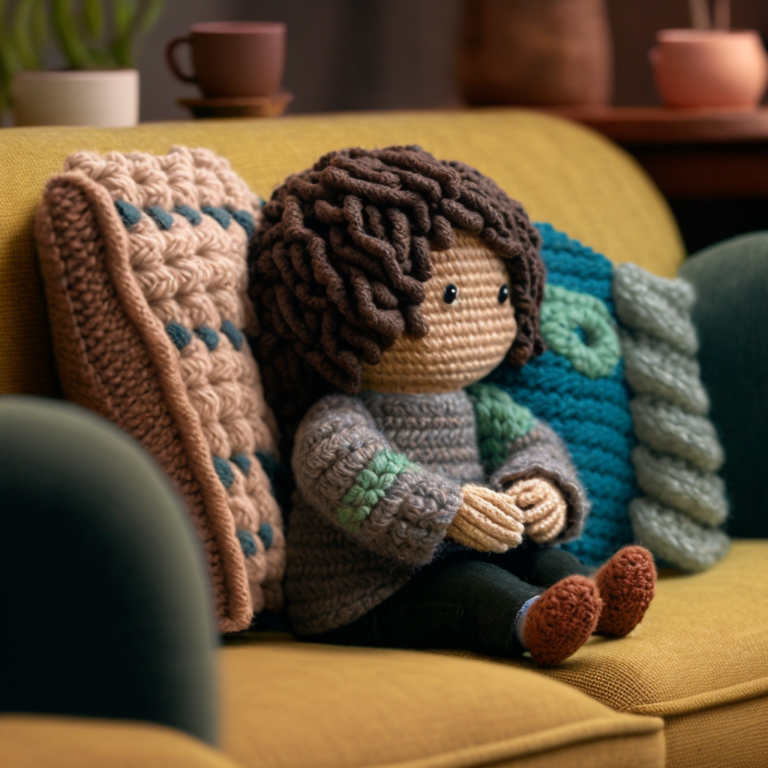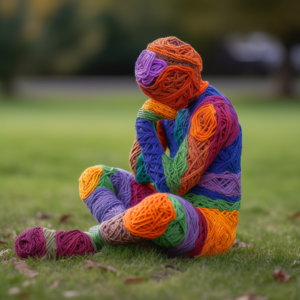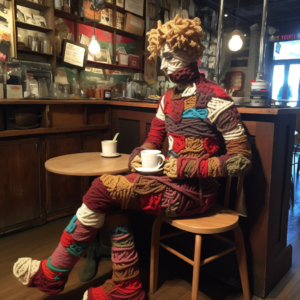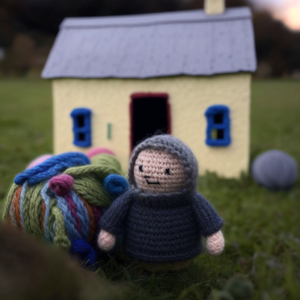Table of Contents
- Introduction
- Benefits of an Autism Friendly Home Environment for Late-Diagnosed Autistic Adults
- Importance of Communication and Collaboration in Creating an Autism Friendly Home Environment for Late-Diagnosed Autistic Adults
- Autism Friendly Home Modifications for Late-Diagnosed Autistic Adults
- Tips for Designing an Autism Friendly Home Environment for Late-Diagnosed Autistic Adults
- Conclusion
“Designing an autism friendly home environment space that embraces sensory needs and promotes comfort for late-diagnosed autistic adults.”
Introduction
Creating an autism friendly home environment is crucial for late-diagnosed autistic adults. Sensory issues are common among autistic individuals, and they can be overwhelming and distressing. A sensory-friendly home can help reduce stress and anxiety, improve overall well-being, and promote independence. In this article, we will discuss some tips for creating a sensory-friendly home environment for late-diagnosed autistic adults.
Benefits of an Autism Friendly Home Environment for Late-Diagnosed Autistic Adults
As more and more adults are being diagnosed with autism later in life, it’s important to create a home environment that is autism friendly. A sensory-friendly home can help reduce stress and anxiety, improve communication, and increase overall well-being.
One of the benefits of a sensory friendly home environment is that it can reduce stress and anxiety. For many autistic adults, sensory overload can be a major source of stress. Loud noises, bright lights, and strong smells can all be overwhelming and cause anxiety. By creating a home environment that is sensory-friendly, you can help reduce these stressors and create a more calming space.
Another benefit of an autism friendly home environment is that it can improve communication. Many autistic adults struggle with communication, whether it’s verbal or nonverbal. By creating a home environment that is sensory-friendly, you can help improve communication by reducing distractions and creating a more comfortable space. This can make it easier for autistic adults to communicate with others and feel more connected to their surroundings.
In addition to reducing stress and improving communication, an autism friendly home environment can also increase overall well-being. Many autistic adults struggle with sensory processing issues, which can make it difficult to feel comfortable in their surroundings. By creating a home environment that is sensory-friendly, you can help improve overall well-being by creating a space that is comfortable and calming.
Creating an autism friendly home environment for late-diagnosed autistic adults can have many benefits, including reducing stress and anxiety, improving communication, and increasing overall well-being. By following these tips, you can create a space that is comfortable and calming for autistic adults.
Importance of Communication and Collaboration in Creating an Autism Friendly Home Environment for Late-Diagnosed Autistic Adults
As more and more adults are being diagnosed with autism later in life, it is important to create an autism friendly home environment that can help them feel comfortable and supported. However, creating such an environment can be challenging, especially if you are not familiar with the unique needs and preferences of autistic adults. That is why communication and collaboration are key when it comes to creating an autism friendly home environment for late-diagnosed autistic adults.
First and foremost, it is important to communicate openly and honestly with the autistic adult in question. Ask them about their sensory preferences and sensitivities, and listen carefully to their answers. Some autistic adults may be hypersensitive to certain sounds, textures, or smells, while others may seek out certain sensory experiences to help them feel calm and focused. By understanding their unique sensory profile, you can make informed decisions about how to create a home environment that meets their needs.
It is also important to collaborate with the autistic adult in designing their living space. This can involve everything from choosing furniture and decor to arranging the layout of the room. By involving the autistic adult in these decisions, you can ensure that their living space reflects their personal style and preferences, while also taking into account their sensory needs.
Another important aspect of creating an autism friendly home environment is to minimize sensory overload. This can involve reducing clutter and visual distractions, as well as minimizing noise and other sensory input. For example, you may want to consider using blackout curtains to block out light and reduce visual stimulation, or using noise-cancelling headphones to reduce auditory input. By minimizing sensory overload, you can help the autistic adult feel more calm and focused in their living space.
In addition to minimizing sensory overload, it is also important to provide sensory input that can help the autistic adult feel comfortable and supported. This can involve everything from providing soft blankets and pillows to creating a designated sensory space where the autistic adult can engage in activities that help them feel calm and focused. By providing sensory input that meets their needs, you can help the autistic adult feel more at home in their living space.
Finally, it is important to be flexible and adaptable when it comes to creating an autism friendly home environment. As the autistic adult’s needs and preferences change over time, you may need to make adjustments to their living space to ensure that it continues to meet their needs. By staying open to feedback and willing to make changes as needed, you can create a living space that truly supports the autistic adult in question.
In conclusion, creating an autism friendly home environment for late-diagnosed autistic adults requires communication and collaboration. By understanding their unique sensory profile, involving them in the design process, minimizing sensory overload, providing sensory input, and staying flexible and adaptable, you can create a living space that truly meets their needs and helps them feel comfortable and supported. With the right approach, creating an autism friendly home environment can be a rewarding and fulfilling experience for both the autistic adult and their loved ones.
Autism Friendly Home Modifications for Late-Diagnosed Autistic Adults
As more and more adults are being diagnosed with autism later in life, it’s important to create an autism friendly home environment that can help them feel comfortable and supported. Autism friendly modifications can make a big difference in the daily lives of late-diagnosed autistic adults, and can help them better manage their sensory needs.
One of the first things to consider when creating an autism friendly home environment is lighting. Many autistic adults are sensitive to bright or flickering lights, so it’s important to choose lighting that is soft and consistent. This can be achieved by using dimmer switches, soft white bulbs, and avoiding fluorescent lighting. Additionally, it’s important to consider the placement of lighting fixtures, as harsh overhead lighting can be overwhelming for some individuals.
Another important modification to consider is soundproofing. Many autistic adults are sensitive to loud or sudden noises, so soundproofing can help create a more peaceful and calming environment. This can be achieved by adding sound-absorbing materials such as curtains, carpets, and acoustic panels. Additionally, it’s important to consider the placement of noisy appliances such as washing machines and dishwashers, and to avoid using them during times when the individual is particularly sensitive to noise.
Furniture and decor can also play a role in creating an autism friendly home environment. Soft, comfortable furniture can help individuals feel more relaxed and at ease, while bright or busy patterns can be overwhelming. It’s important to choose furniture and decor that is simple and calming, and to avoid clutter or excessive decorations. Additionally, it’s important to consider the texture of fabrics and materials, as some individuals may be sensitive to certain textures.
Another important modification to consider is temperature control. Many autistic adults have difficulty regulating their body temperature, so it’s important to create a comfortable and consistent temperature in the home. This can be achieved by using a programmable thermostat, adding insulation, and using fans or air conditioning as needed. Additionally, it’s important to consider the placement of windows and doors, as drafts can be uncomfortable for some individuals.
Finally, it’s important to consider the layout of the home. Many autistic adults benefit from having a designated sensory space where they can go to relax and recharge. This space should be quiet, comfortable, and free from distractions. Additionally, it’s important to consider the flow of the home, and to avoid creating areas that are too crowded or overwhelming.
Creating an autism friendly home environment for late-diagnosed autistic adults can be a challenging but rewarding process. By making modifications to lighting, sound, furniture, temperature, and layout, individuals can feel more comfortable and supported in their daily lives. It’s important to remember that every individual is unique, and modifications should be tailored to their specific needs and preferences. With patience, understanding, and a willingness to make changes, it’s possible to create a home environment that promotes comfort, relaxation, and well-being.
Tips for Designing an Autism Friendly Home Environment for Late-Diagnosed Autistic Adults
As more and more adults are being diagnosed with autism later in life, it’s important to create a home environment that is autism friendly. Autism friendly environments can help reduce stress and anxiety, improve focus and concentration, and promote overall well-being. Here are some tips for designing an autism-friendly home environment for late-diagnosed autistic adults.
1. Reduce Clutter
Clutter can be overwhelming for anyone, but it can be especially overwhelming for autistic adults. It’s important to keep the home environment as clutter-free as possible. This can be achieved by regularly decluttering and organizing the home. It’s also important to have designated spaces for items, such as a specific spot for keys or a designated area for shoes.
2. Use Soothing Colors
Colors can have a big impact on mood and emotions. For an autism friendly home environment, it’s best to use soothing colors such as blues, greens, and earth tones. These colors can help promote relaxation and calmness. It’s also important to avoid bright, bold colors that can be overstimulating.
3. Incorporate Natural Light
Natural light can have a positive impact on mood and well-being. It’s important to incorporate natural light into the home environment as much as possible. This can be achieved by opening blinds and curtains during the day and using light-colored window treatments. It’s also important to avoid harsh, artificial lighting that can be overstimulating.
4. Use Soft Textures
Textures can also have a big impact on sensory experiences. For an autism friendly home environment, it’s best to use soft textures such as plush rugs, cozy blankets, and comfortable furniture. These textures can help promote relaxation and comfort. It’s also important to avoid rough, scratchy textures that can be overstimulating.
5. Create Quiet Spaces
Quiet spaces can be a sanctuary for autistic adults who may need a break from sensory overload. It’s important to create quiet spaces in the home environment, such as a designated reading nook or a meditation area. These spaces should be free from distractions and overstimulation.
6. Incorporate Nature
Nature can have a calming effect on the mind and body. It’s important to incorporate nature into the home environment as much as possible. This can be achieved by adding plants, using natural materials such as wood and stone, and incorporating natural elements such as water features.
7. Consider Sensory-Friendly Technology
Technology can be a great tool for autistic adults, but it’s important to consider sensory-friendly options. For example, noise-cancelling headphones can help reduce sensory overload from loud noises. It’s also important to consider the brightness and color settings on electronic devices, as these can be overstimulating.
Creating an autism friendly home environment for late-diagnosed autistic adults can be a process, but it’s worth the effort. By reducing sensory overload and promoting relaxation and comfort, a sensory friendly home environment can help improve overall well-being.
Conclusion
Creating an autism friendly home environment for late-diagnosed autistic adults is crucial for their well-being and comfort. It involves understanding their sensory needs and making necessary adjustments to the home environment. This can include reducing noise levels, providing comfortable seating, using calming colors, and minimizing clutter. By creating an autism friendly home environment, late-diagnosed autistic adults can feel more comfortable and supported in their daily lives.
Similar Articles

Autism Friendly Environments: Crafting Comfortable Spaces at Home, School, and Work
Creating autism friendly environments is essential for autistic individuals to feel comfortable and supported in various settings. By understanding their unique needs, you can adapt










5 Responses
vj10gi
6zk1tj
0k0z02
okbzzs
k54mrv